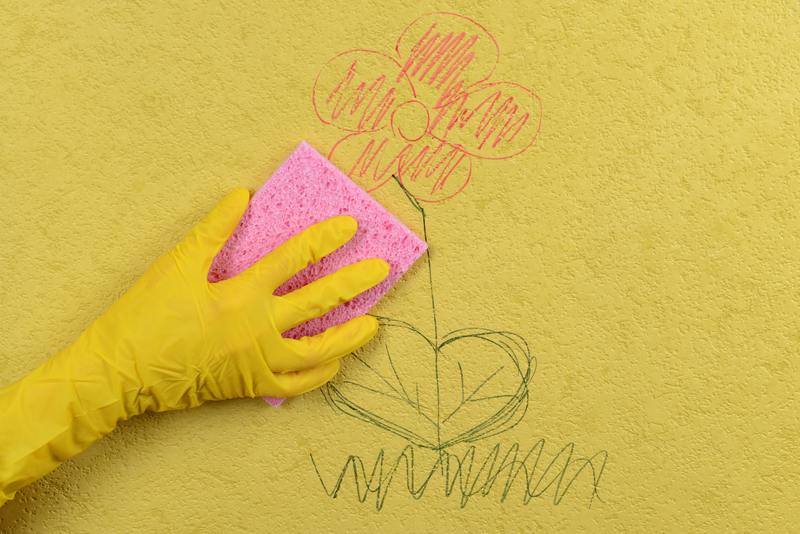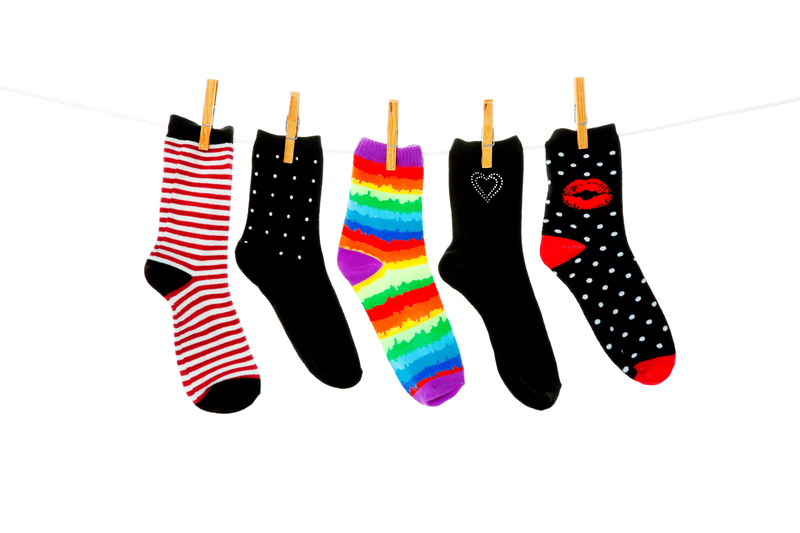Freshen Up Your Living Areas by Removing Pet Odor
Posted on 08/06/2025
Freshen Up Your Living Areas by Removing Pet Odor: The Ultimate Guide
Pets are priceless companions, bringing joy, love, and warmth to our homes. However, even the most lovable of pets can sometimes leave behind less-than-lovable odors. If you’re searching for ways to freshen up your living areas by removing pet odor, you’re not alone. Unpleasant pet smells, especially if left untreated, can take over your living space, impact indoor air quality, and leave an unfavorable impression on guests.
Fortunately, you don’t have to accept lingering pet smells as just a part of life. In this comprehensive, SEO-optimized guide, you’ll discover actionable tips, cleaning routines, and proven remedies to help you remove pet odor from your living areas, ensuring your home stays inviting and fresh-smelling every day.

Why Do Pet Odors Linger in Living Areas?
Understanding the root of pet odors is vital for effective removal. Pet odors typically stem from:
- Pet dander: Minute skin flakes that can accumulate on surfaces, causing not just odors but also allergic reactions.
- Accidents: Urine, feces, or vomit accidents can seep into carpets and upholstery, leading to persistent bad smells.
- Saliva and oils: Saliva from licking objects or themselves and natural oils from their fur can transfer onto carpets, furniture, and bedding.
- Improper cleaning: Ineffective cleaning methods might only mask, rather than eliminate, unwanted pet odors.
Learning how to remove pet odors from your home requires a combination of cleaning strategies, preventive measures, and the right odor-fighting products. Let’s dive deeper.
Essential Steps for Removing Pet Odor From Living Areas
1. Identify the Source of the Odor
Pet odors can be stubborn because they seep into porous materials. Before you can freshen up your living spaces, you need to determine which items or areas are causing the scent. Look (and sniff) for:
- Pet bedding and toys
- Carpets and rugs
- Upholstered furniture
- Floor corners and hidden spots
- Walls or baseboards
Tip: Use a blacklight to detect pet urine spots on carpets and furniture, making the source of pet odor more visible.
2. Deep Clean Carpets and Upholstery
Carpets and sofas are notorious for trapping odors. Refreshing these surfaces is key to eliminating pet odors in the living areas.
- Vacuum thoroughly: Use a vacuum cleaner with a HEPA filter to pick up dander, fur, and debris. Make several passes, especially in high-traffic pet areas.
- Use enzymatic cleaners: For pet urine or feces stains, apply an enzymatic cleaner. These break down odor-causing proteins rather than just masking the smell.
- Steam clean regularly: Rent or invest in a pet-friendly steam cleaner for regular deep cleans of carpets and upholstered furniture.
Note: Enzymatic cleaners are your best defense against persistent pet smells. Avoid harsh chemicals that can interact with urine and intensify the scent.
3. Wash or Replace Soft Furnishings
Soft furnishings, such as curtains, pillow covers, and pet beds, can absorb odors like a sponge. To truly freshen up your home by removing pet odors, make these steps a part of your routine:
- Launder frequently: Wash pet bedding, throw blankets, and removable cushion covers weekly with a mild, pet-safe detergent.
- Consider hypoallergenic fabrics: Opt for easy-to-clean, odor-resistant fabrics in your living area.
- Replace when necessary: If blankets or cushions retain odor after multiple washes, consider replacing them.
4. Keep Hard Floors Spotless
While pet accidents on hard floors like tile, wood, or laminate may seem easier to clean, they can still absorb odors, especially if not tackled quickly.
- Mop floors regularly: Use a mixture of white vinegar and water for a natural, odor-neutralizing clean.
- Treat hidden nooks: Pay attention to baseboards and under furniture, where smells can linger unnoticed.
- Repair any damage: Seeped-in urine can penetrate wood. Re-seal or refinish affected areas if necessary.
5. Improve Ventilation and Air Quality
Stale indoor air can worsen pet odors. Enhancing your home’s ventilation will freshen your space and help banish persistent pet smells:
- Open windows daily: Allow fresh air to circulate, especially after cleaning.
- Use air purifiers: Choose HEPA and activated carbon filters to effectively capture pet dander and odors.
- Change HVAC filters: Pet fur and dander accumulate in air vents. Replace filters monthly for optimal results.
6. Employ Natural Deodorizers
If you prefer to avoid synthetic fragrances, there are plenty of natural ways to remove pet odors from living areas:
- Baking soda: Sprinkle on carpets or upholstery, let sit for 15-30 minutes, then vacuum thoroughly to neutralize smells.
- Activated charcoal: Place sachets behind furniture or in corners to absorb airborne odors.
- Essential oils: Use in diffusers (ensure oils are pet-safe) to give your rooms a fresh, natural scent.
- Coffee grounds: Leave bowls of fresh coffee grounds in affected areas to soak up odors quickly.
7. Tackle Pet Accidents Immediately
No matter how well-trained your pet may be, occasional accidents happen. Fast action prevents lingering odors:
- Blot, don’t rub: Use paper towels to soak up as much liquid as possible without spreading it further.
- Clean with enzymatic products: Break down the odor molecules and remove stains permanently.
- Avoid ammonia-based cleaners: The smell can mimic urine for pets, causing repeat accidents.
Preventing Pet Odors: Tips for Ongoing Freshness
Prevention is the best way to keep your living areas fresh-smelling year-round. Here’s how to reduce the likelihood of future pet odor issues:
1. Groom Your Pet Regularly
- Bathe your pet as advised by your veterinarian for their breed and skin type.
- Brush fur several times a week to remove loose dander and prevent it from embedding in your furniture and flooring.
- Keep nails trimmed to limit scratching that damages floors and encourages odor absorption.
2. Maintain a Clean Litter Box or Cage
- Scoop litter boxes at least once daily, washing them thoroughly on a weekly basis.
- Choose odor-neutralizing litters and change them regularly.
- For small pets, frequently refresh bedding to prevent musty cage odors from spreading throughout your home.
3. Wash Pet Accessories Frequently
- Beds, collars, toys, and leashes can harbor bacteria and smells. Wash these items often to keep odors at bay.
- Machine-washable accessories are most convenient for ongoing freshness.
4. Train Pets With Consistency
- House-train dogs early and reinforce proper bathroom habits.
- Address marking behavior promptly to prevent repeat issues.
5. Create Pet-Free Zones
- Designate certain areas (like formal living rooms or bedrooms) as off-limits to pets.
- This helps localize and manage pet odors more easily.
The Best Products for Removing Pet Odor
There’s no shortage of products promising to eliminate pet odor from your home. To achieve the best results, consider using the following:
- Enzymatic Cleaners: Specifically designed for pet stains and odors; always check for pet safety and material compatibility.
- Odor-Absorbing Gels and Sprays: Offer a quick fix for minor scents and are useful between deep cleans.
- HEPA Air Purifiers: Filter fine particles, including dander and airborne odor elements.
- Upholstery and Carpet Shampooers: Ensure you choose options with pet-specific formulas for best results.
- Pet-Friendly Fabric Refreshers: Avoid masking sprays with heavy chemicals in favor of light, uncontested scents.
Pro tip: Always test cleaning products on a small, hidden spot first to ensure they don’t stain or damage your surfaces.
Common Mistakes to Avoid When Removing Pet Odor
- Using scented sprays only: Air fresheners may mask pet odor, but do not remove the underlying cause.
- Waiting too long: The longer odors sit, the deeper they permeate. Act quickly after accidents or noticing a smell.
- Skipping routine cleaning: Consistent upkeep reduces stubborn odors in the long term.
- Neglecting less obvious sources: Don’t forget pet toys, collars, or even pet clothing, all of which can carry smells.
DIY Pet Odor Removal Solutions
If you prefer to use household items, here are a few effective homemade recipes:
- Baking soda and vinegar paste: Mix into a thick paste, apply to stains, let sit, then scrub and blot dry.
- Lemon juice and water spray: Combine and lightly mist over surfaces for a natural, fresh scent boost.
- Vodka spray: Fill a spray bottle with plain vodka and spritz onto fabrics; the alcohol kills bacteria and evaporates, taking odors with it.
Always check your material’s cleaning instructions before applying any DIY solution.

When to Call in the Professionals
Sometimes, home remedies aren’t enough to remove stubborn pet odors in your living areas. If you’ve tried everything and the odors still persist, it may be time to consult with a professional cleaning service. They possess industrial-grade equipment, advanced cleaning agents, and the expertise necessary to tackle even the deepest-set pet smells.
Conclusion: Enjoy a Fresher, Odor-Free Home
Living with pets shouldn’t mean sacrificing fresh, welcoming living spaces. By following these effective strategies for removing pet odor, you can enjoy the company of your furry friends without worrying about uninviting smells. Remember, the key is a consistent routine: regular grooming, frequent washing, prompt accident clean-up, and periodic deep cleans. Enhance your efforts with natural solutions and reliable products, and your home will remain as inviting and comfortable as ever—for both you and your pets.
Start incorporating these tips today and experience the difference in how your home smells and feels. Freshen up your living areas by removing pet odor once and for all!




